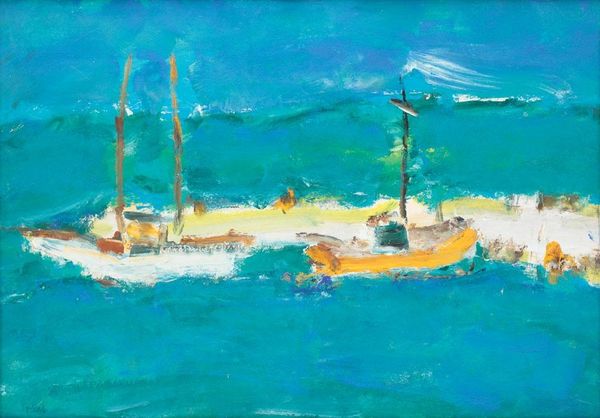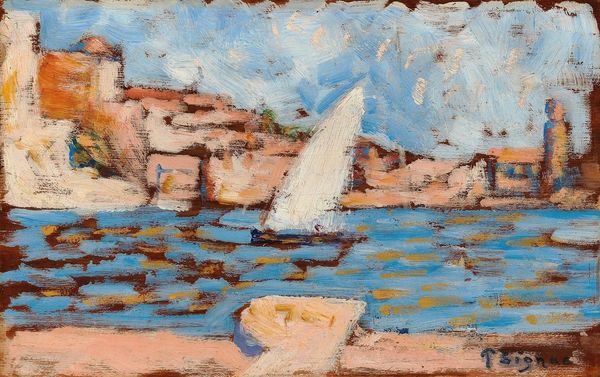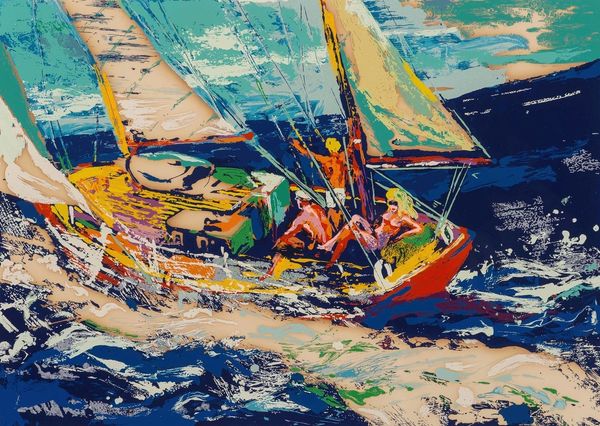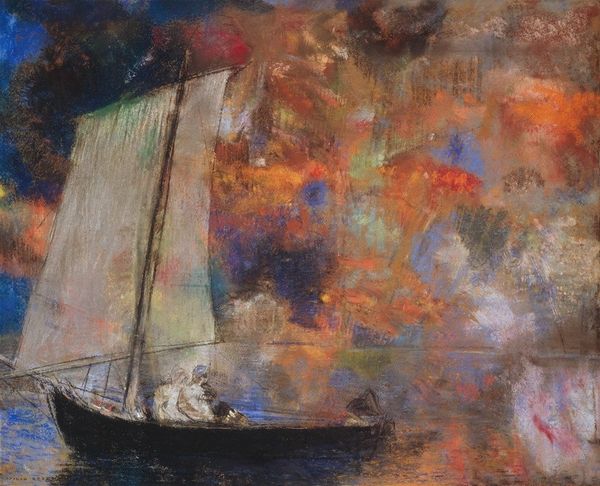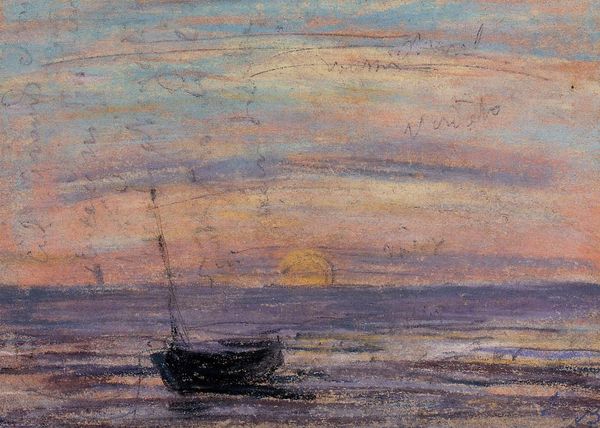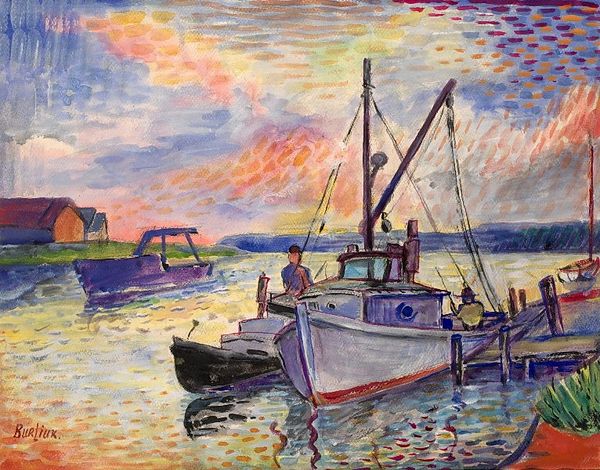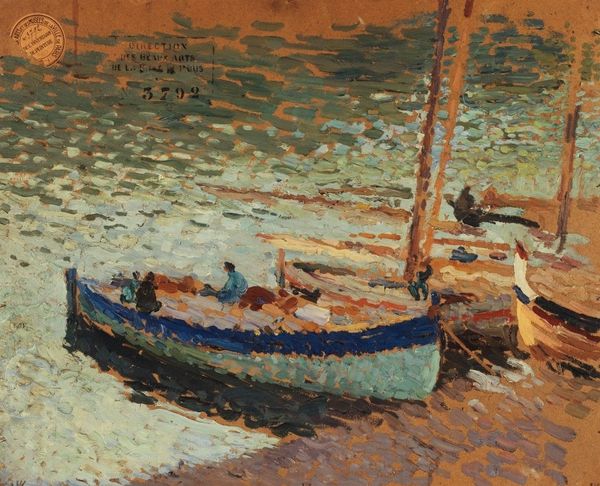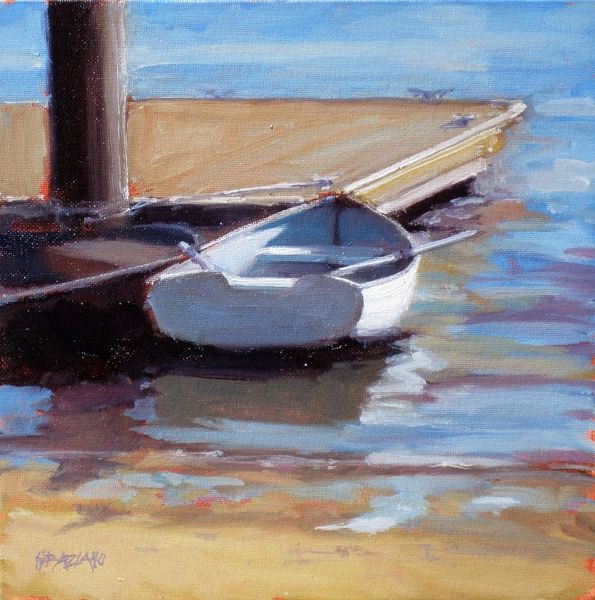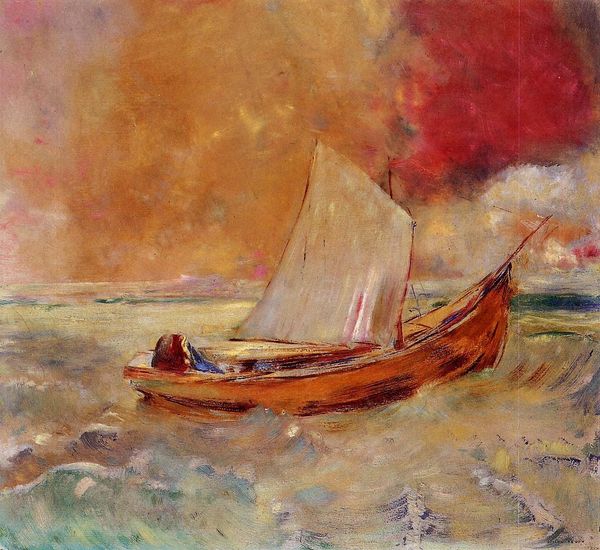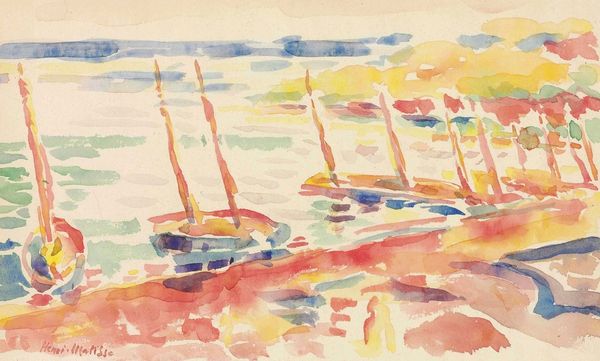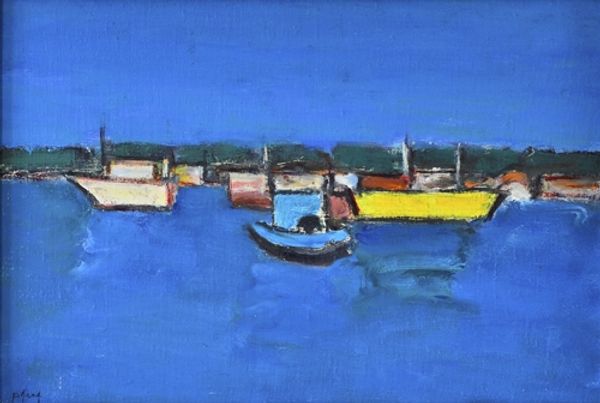
divisionism, painting, oil-paint, impasto
#
divisionism
#
painting
#
oil-paint
#
landscape
#
impressionist landscape
#
oil painting
#
impasto
#
cityscape
#
post-impressionism
Copyright: Public Domain: Artvee
Editor: At first glance, this painting radiates heat, doesn’t it? A palpable shimmer rises from the water. Curator: Indeed. This is Paul Signac’s "Concarneau," created in 1891 using oil on canvas. It’s a prime example of Divisionism, where color is separated into individual strokes that visually blend when viewed at a distance. Editor: The choice of vibrant, unmixed pigments is certainly striking. The application is wonderfully uneven, almost raw in places, generating a powerful feeling of atmospheric dynamism. Curator: It’s essential to remember that Signac, along with Seurat, developed this style during a period of great social and political change in France. Pointillism, as it’s also known, emerged from broader anarchist ideals - aiming for a more scientific, and in theory more egalitarian approach to painting by dismantling the traditional hierarchy of brushstrokes and subject matter. Editor: I'm curious, can we consider the individual brushstrokes as signifiers? The varied and deliberate placement of the points or dashes of color. A code to be deciphered in terms of color theory and optics. Curator: Precisely. The eye becomes a crucial part of the image construction. Beyond mere representation, Signac challenges conventional seeing, almost democratizing the act of perception. And look at the choice of Concarneau - a relatively small port; Signac seeks locations outside Paris, driven by ideals about purity, community, or possibly even escapism. Editor: Perhaps that is why this townscape emits such a sense of both peaceful isolation and warmth. A harmonious retreat, meticulously assembled by way of juxtaposed colors. This reminds us how revolutionary the artistic expression can become under certain social and aesthetic conditions. Curator: Absolutely. Studying Signac provides insights not only into Post-Impressionism, but into the artistic movements tied to broad social reforms. Editor: It does open my eyes again, not just to Signac, but also the possibilities of art serving the people and advancing society in an orderly fashion.
Comments
No comments
Be the first to comment and join the conversation on the ultimate creative platform.
